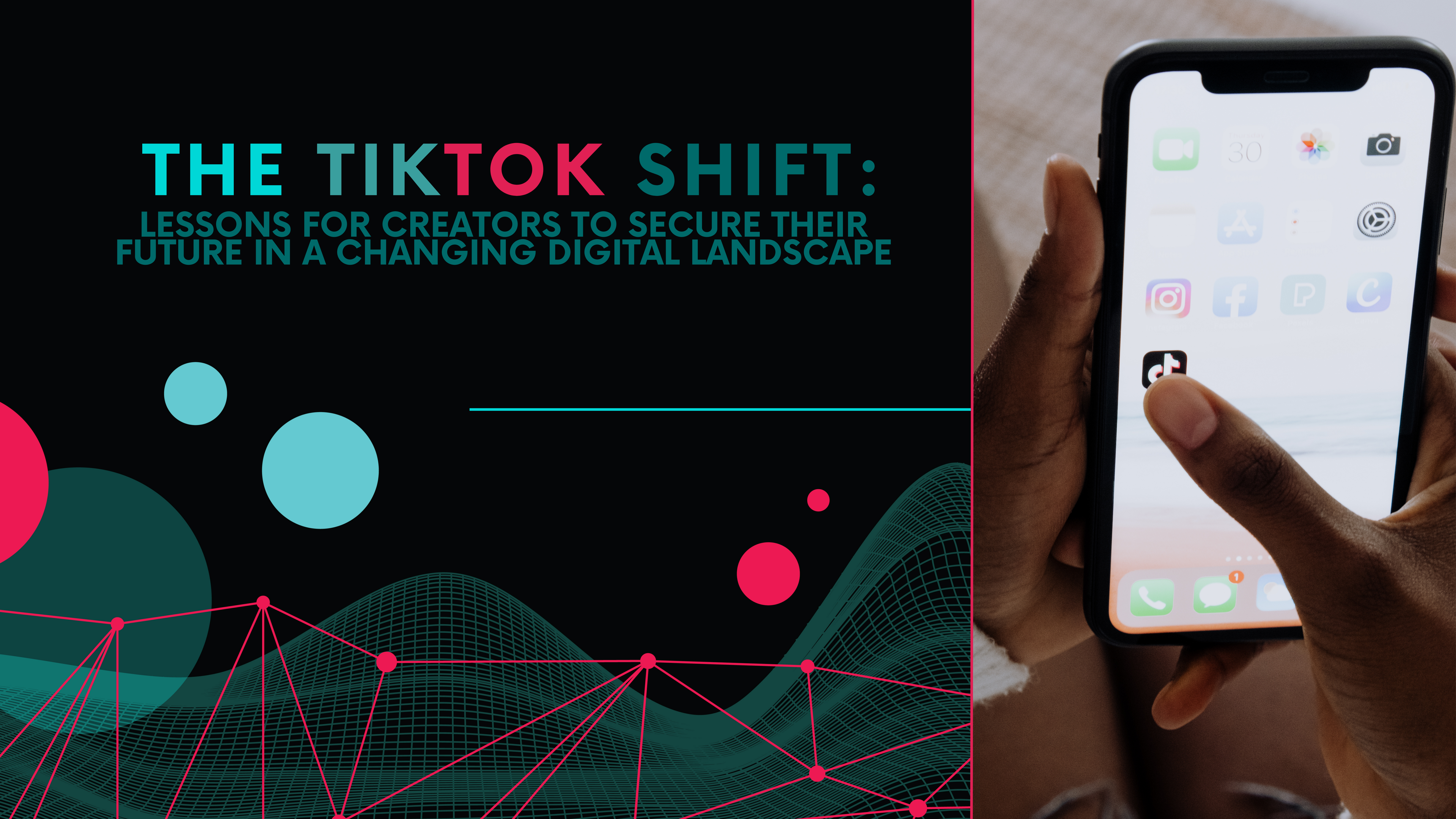Few platforms have disrupted the social media landscape as profoundly as TikTok. By redefining how content is discovered and consumed, TikTok empowered creators of all sizes to reach massive audiences and make their mark on a global stage. Yet, as discussions around a potential TikTok ban continue to gain traction, a sobering reality emerges: the platforms we rely on today might not be here tomorrow.
For creators—especially those without millions of followers or off-platform revenue streams—this uncertainty highlights the need for a deeper strategy. Building an audience solely on platforms like TikTok, Instagram, or YouTube is akin to constructing a house on rented land: powerful in the short term but inherently fragile.
As we grapple with the possibility of a world without TikTok, two lessons stand out: the enduring impact of TikTok’s interest-based discovery model and the importance of taking control of your audience. These lessons offer creators and brands the tools to navigate an unpredictable future while securing sustainable success.
How TikTok Revolutionized Content Discovery
Before TikTok, the dominant model for social media platforms was built on the social graph. Platforms like Facebook, Instagram, and Twitter prioritized content from people you already knew—your friends, family, and professional connections. Success often depended on how many people you could already reach.
TikTok changed everything.
Its introduction of the For You Page (FYP) marked a seismic shift in how audiences discovered content. Instead of relying on the social graph, TikTok pioneered the interest-based graph. This system used advanced algorithms to deliver content based on individual user preferences, behaviors, and interactions. In essence, TikTok didn’t care who you knew; it cared about what you liked.
This approach democratized content discovery. Anyone, regardless of follower count or social connections, could have their videos shown to millions of people. Smaller creators who lacked large networks suddenly found themselves competing on a level playing field with established influencers.
The Impact of the Interest-Based Graph
TikTok’s interest-based graph not only changed the game for creators but also forced competitors to adapt. Platforms like Instagram, YouTube, and even Snapchat began implementing similar features to stay relevant. Instagram introduced Reels, YouTube launched Shorts, and even Twitter explored video-focused features to mimic TikTok’s success.
This innovation didn’t just make TikTok popular—it set a new standard for the entire industry. Today, the interest-based graph has become the norm, reshaping how audiences engage with content across all platforms.
But while TikTok’s model created unprecedented opportunities for discovery, it also underscored a critical vulnerability: reliance on platforms comes with significant risks.
The Fragility of Rented Platforms
For all its benefits, TikTok’s success comes with a glaring caveat: creators are building their audiences on borrowed time. Social media platforms are not permanent, and the rules they operate under can change overnight.
The Risks of Platform Dependency
- Algorithm Shifts: A platform’s algorithm can change without warning, altering who sees your content and when.
- Declining Organic Reach: Platforms often prioritize paid content over organic posts. Facebook, for example, saw its organic reach plummet from 16% to just 1% over the years.
- Platform Shutdowns: The potential TikTok ban serves as a stark reminder that platforms can be restricted, banned, or shut down entirely due to regulatory or political pressures.
Even creators with massive followings are not immune. A sudden change could render years of hard work ineffective, leaving creators scrambling to rebuild their audiences elsewhere. For smaller creators who rely entirely on one platform, such changes could be devastating.
Owning Your Audience: The Path to Sustainability
If TikTok’s story has taught us anything, it’s the importance of diversifying and owning your audience. Platforms may come and go, but the connections you build with your followers should outlast the medium through which they were established.
Why Audience Ownership Matters
Building a following on a platform is like renting an apartment—it gives you access to an audience, but you don’t own the space or the rules. Owning your audience, on the other hand, provides stability and control.
When you have direct access to your audience—through email lists, SMS campaigns, or private communities—you’re no longer at the mercy of platform algorithms or policies. These owned channels allow you to maintain relationships with your audience, even if a platform changes or disappears.
Strategies for Owning Your Audience
- Email Marketing
Create a newsletter to keep your audience informed and engaged. Email lists are one of the most reliable ways to maintain direct communication, with platforms like Mailchimp, HubSpot, or ConvertKit making it easy to manage. - SMS Campaigns
Text messages have some of the highest open and engagement rates of any communication channel. They allow you to reach your audience instantly, without interference from algorithms. - Private Communities
Platforms like Discord, Slack, or even exclusive Facebook Groups enable creators to foster deeper connections with their audiences. These communities can become hubs for meaningful interaction and engagement. - Personal Websites
A website is your digital home base—a space you own entirely. Use it to host content, sell products, and share updates. With proper SEO strategies, a website can also attract organic traffic independent of social platforms. - Diversification Across Platforms
While owning your audience is ideal, diversifying your presence across multiple platforms can reduce risk. Expanding your reach to Instagram, YouTube, LinkedIn, or even niche platforms ensures that you’re not putting all your eggs in one basket.
What TikTok’s Legacy Means for Creators
TikTok’s rise and potential fall reveal two key truths about the digital landscape:
- Platforms will continue to evolve, and new ones will emerge to challenge the status quo.
- The only way to secure long-term success is to focus on building meaningful, direct relationships with your audience.
While TikTok may have popularized the interest-based graph, its most enduring lesson is the importance of sustainability. Creators and brands must use platforms as tools for discovery—not as the foundation of their entire strategy.
Preparing for the Future
As we navigate the uncertainties surrounding TikTok, one thing is clear: the digital landscape is constantly changing. Platforms will come and go, but the principles of building a sustainable audience remain constant.
Invest in tools and strategies that give you control over your audience. Prioritize owned channels, diversify your presence, and focus on fostering genuine connections with your followers.
TikTok’s story is still unfolding, but the lessons it has taught us are timeless. The creators and brands that thrive in the years to come will be those who adapt, innovate, and build their foundations on something more stable than “rented land.”
Closing Thoughts
The TikTok shift isn’t just about one platform—it’s a wake-up call for the entire creator economy. Whether you’re a small creator just starting out or a brand looking to expand your reach, the message is clear: don’t just invest in platforms. Invest in your audience.



